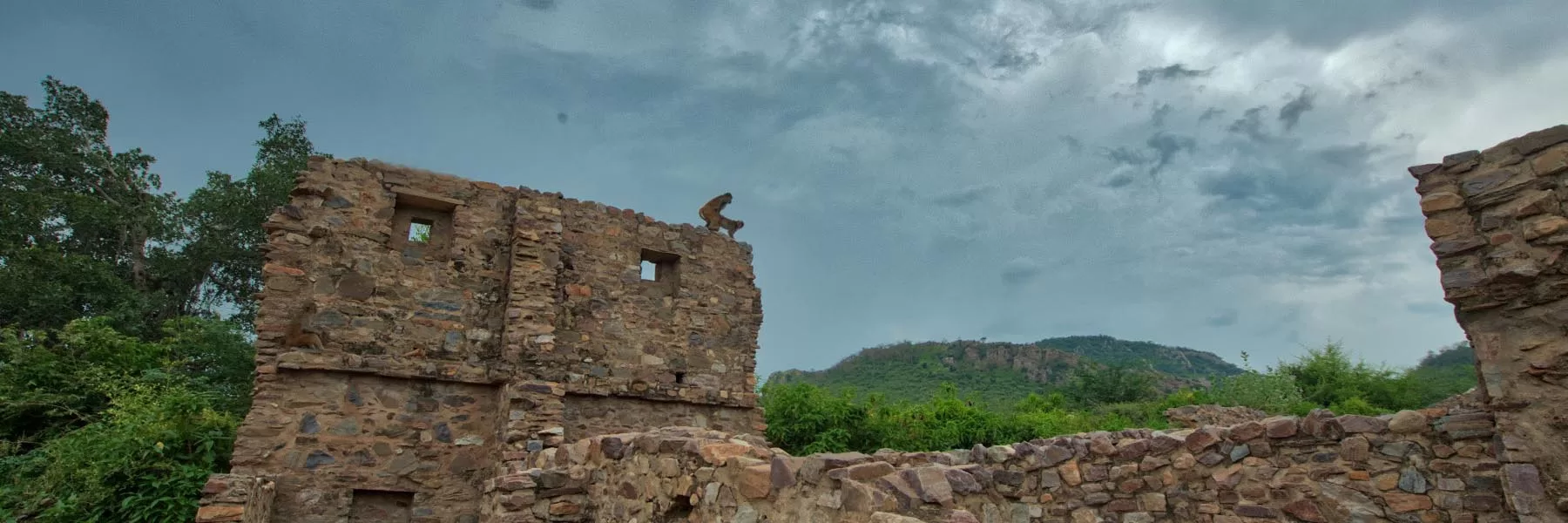India, with its diverse terrain and habitats, has a rich biodiversity that supports a wide range of primates. Some prefer forests, others live in grasslands, some even live in deserts, while some species prefer being close to human settlements. We discuss some common and some uncommon primate species of India.
Gray Langur
These are large primates with a black face and gray-yellowish bodies. They are amongst the largest species of monkeys in Asia. Langurs are also known as leaf-eating monkeys in India. These animals prefer open and lightly wooded habitats and often inhabit urban areas. The eight subspecies of langur vary in size and tail shape. They are- Northern Plains gray langur, Kashmiri gray langur, Tarai gray langur, Black-footed gray langur, Tufted gray langur, Nepal gray langur, Purple-faced langur, and Nilgiri langur.

Gray Langur
Golden Langur
Gee’s Golden Langur, or Golden Langur, is one of the most beautiful primate species in India. Unfortunately, it is also amongst the most endangered. Their uniform coat of cream turns dazzling golden when light falls on it. This animal mostly inhabits the western regions of Assam. The primate mostly confines itself to high trees, where its long tail helps navigate between trees. The Golden Langurs are herbivores and feed on leaves, buds, seeds, flowers, and fruit. The population of Golden Langur in India has dipped to about 1500, and the government has launched various conservation initiatives to help revive the population.

Golden Langur
Capped Langur
Capped Langur is like Gray Langur, but it has a cap of erect and coarse hair, which distinguishes it from the other species. The langur is slender and light brown. Capped Langur babies are born golden or creamy white, unlike other langurs that are born black. The Capped Langur is also known as Leaf Monkey, as its diet is mainly leaves and twigs. These gregarious creatures move in herds of 2 to 14 members. Their habitat is subtropical and tropical dry forests.

Capped Langur
Nilgiri Langur
These distinctive langurs have a glossy black body and a yellowish-brown head. Native to the Western Ghats, these primates inhabit the Nilgiri Hills, Kodayar Hills, and surrounding regions of Coorg, Anaimalai, Cape Comorin, and Brahmagiri. They live in troops of up to ten members and feed on fruits and leaves. Because of poaching and habitat destruction, these animals are classified as vulnerable.

Nilgiri Langur
Rhesus Macaque
These are the most commonly known monkeys in India. Their habitat is spread across the country, and they’re found in large concentrations in Delhi, Rajasthan, and Varanasi. They have a tolerance to a broad range of habitats. They live in grasslands and arid areas, but also prefer living close to human settlements. You can find them near temples, railway stations, and other public areas, accepting food from humans.

Rhesus Macaque
Bonnet Macaque
Endemic to South India, the bonnet macaque lives in evergreen and dry deciduous forests of the Western Ghats. Bonnet Macaques have the longest tails among all Indian monkeys. Males weigh up to 5.5 kgs while females can weigh as much as 4.5 kg. These primates feed on flowers, fruits, nuts, seeds, and small invertebrates. They move and feed in troops numbering 20 to 30 members.
Stump-tailed Macaque
Also called bear macaque, this primate lives in South Asia. You can find these animals towards the south of the Brahmaputra river, and they live in the Eastern states of Assam, Nagaland, Arunachal Pradesh, Mizoram, Tripura, and Manipur. Stump-tailed macaques have short tails, thick dark brown fur covering their body, and pink/red faces.

Stump Tailed Macaque
Lion-tailed Macaque
These primates are notable for the silver-white mane surrounding the head from the cheeks to the chin. These elusive primates inhabit the dense forests of Western Ghats and prefer to stick to their territory. They are expert climbers and prefer the upper canopy of the forests. These social animals are territorial; their troops of 10 to 20 members defend their area with loud cries and also resort to aggressive brawls when provoked. These are among the rarest and most threatened primates, and only 3000-3500 remain.

lion tailed macaque
Hoolock Gibbon
These are the second-largest gibbons in the world and the only ape species in India. Only a few hundred of these primates inhabit the northeastern forests of Chittagong and Assam. They get their name from their unique vocalizations, that are loud and elaborate. Their diet includes fruits, leaves, and insects. Their dwindling numbers are the consequence of habitat encroachment, slash-and-burn cultivation, hunting, and trade.

Hoolock Gibbon
Slender Loris
These lemurs have small bodies, large ears, and pointed snout. These nocturnal animals dwell in the thick, wet, and dry forests of southern India. Their diet includes flowers, shoots, leaves, insects, and slugs. Because of their distinctive eyes, these animals have become victims of relentless poaching. Their numbers now stand between 300 to 400.
If you loved reading this story, then subscribe to our blog here (it will ask to verify your email) to get inspiring travel stories and trivia delivered to your email. Stories about wildlife trivia, cultural experiences, curated luxury hotel lists, underrated places to travel, polar journeys and much more.











